More fish! And this time, another of my favorite type of fish! Yes, it’s another bichir, and another saddled bichir Polypterus endlicheri, a species that I discussed quite some time ago (the Colorata figure). Which I suppose means I won’t need to go into too many details about the species, so I’ll be able to discuss the figure more at length–and then discuss the surprise little extra with the figure (spoiled in the title I suppose).
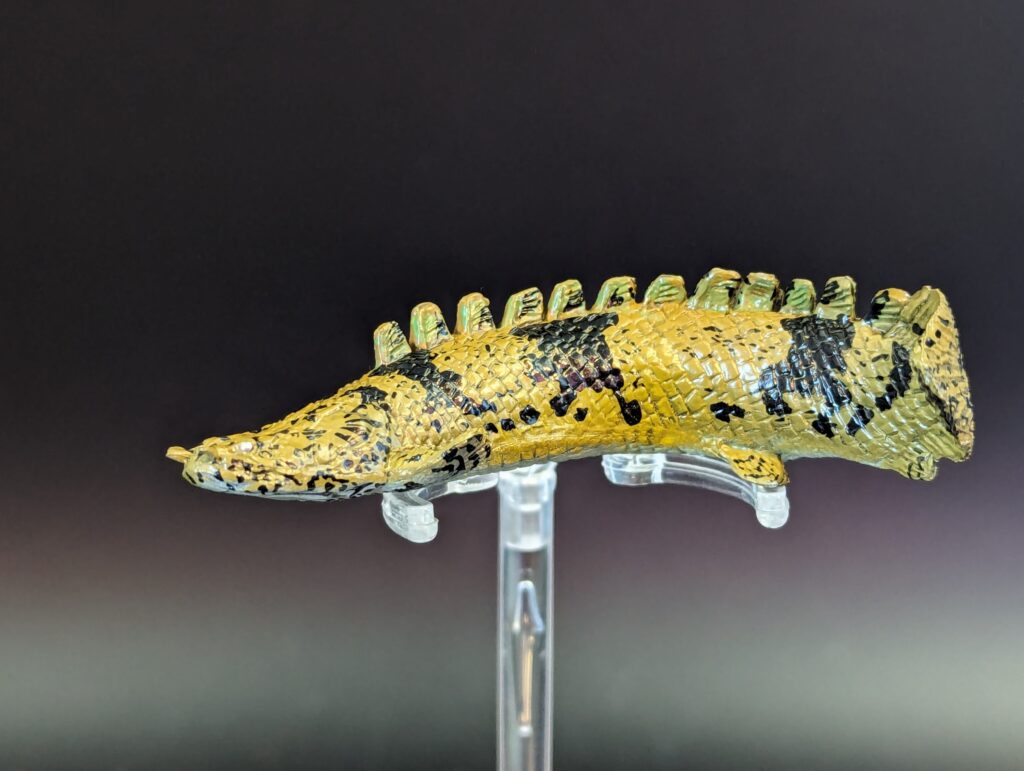
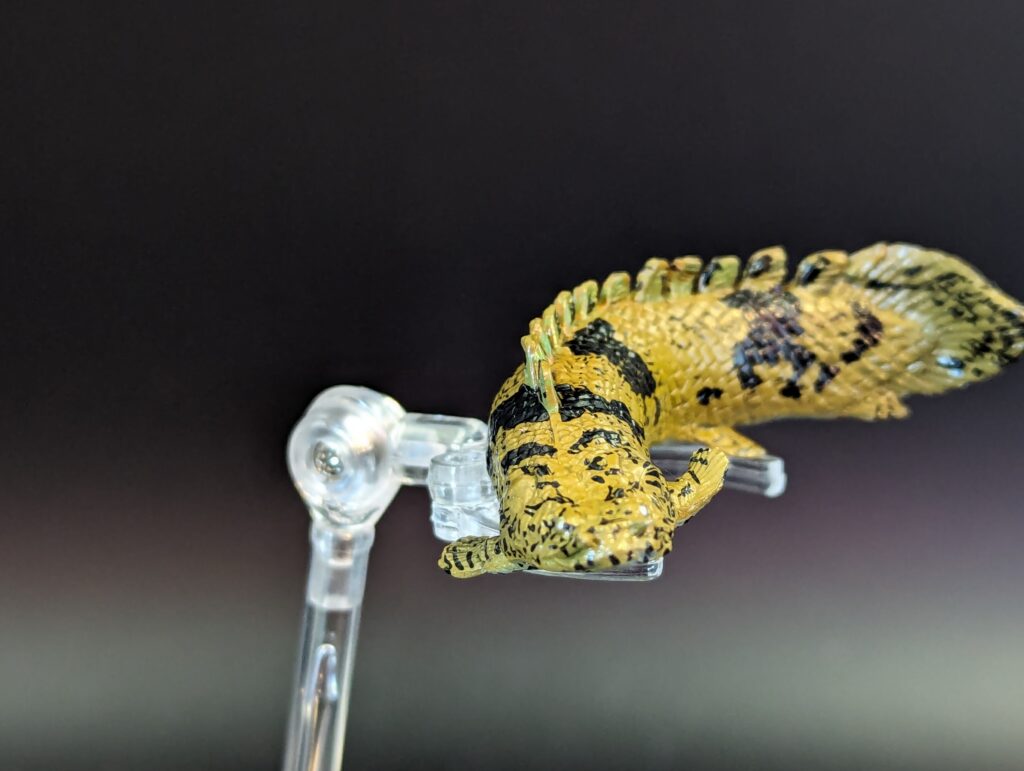
This figure is one of 5 figures released recently (Fall 2023) from Bandai, their Ancient Fish Series 2 collection. As the name suggests, the series features fish that are generally recognized as being ‘ancient’, meaning fish with a deep geologic history. Of course, when it comes to ray-fin fishes, none have a deeper phylogenetic history than bichirs, part of the basal grouping Cladistia, and sister-group to the whole rest of Actinopterygii. Of course, while Cladistia may have relatives known from at least the early Triassic, Polypteriformes are first known from the late Cretaceous, so if a fish is part of an Ancient Fishes series, few would be more appropriate!
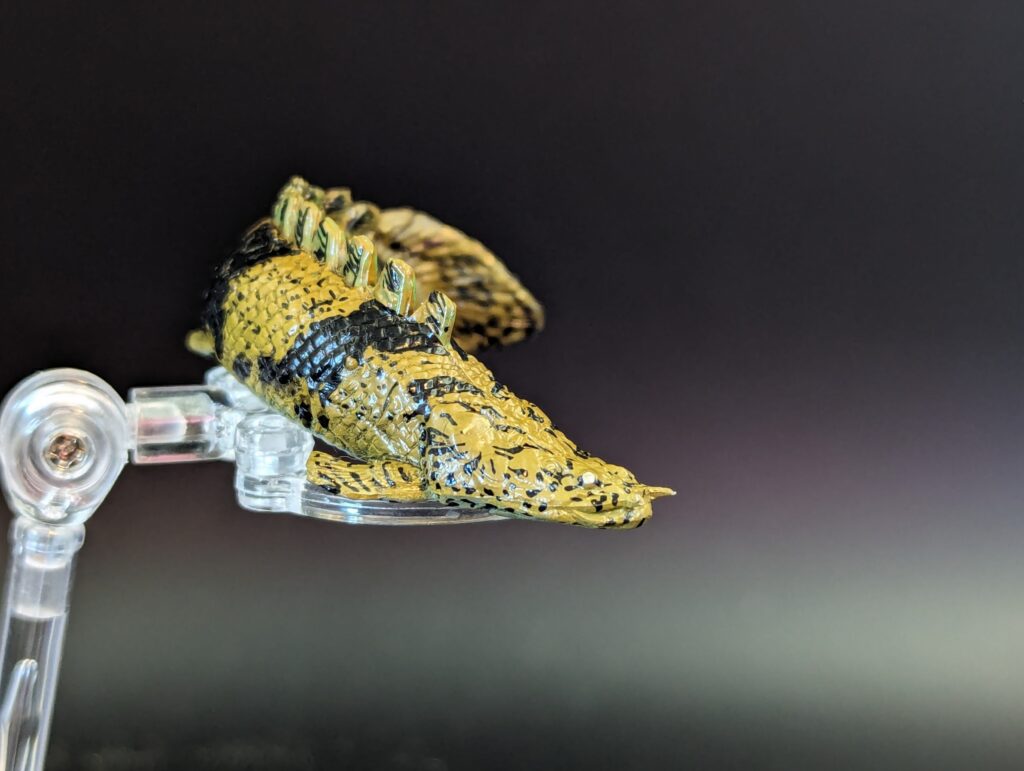

And now, given that Japanese companies have been slowly producing figures of P. endlicheri since about 2005…how does this one look? Overall, it’s a great figure. It’s a fairly small figure, which makes sense since it’s a capsule figure. It measures just over 11 centimetres, so given the rough max length of the species of around 65cm, the figure is about 1:6 scale. It is very well proportioned, and despite its size has the distinct appearance of a full grown adult. The body is very broad and tubular, sculpted in a curved arc, while the head is broad and slopes strongly toward from the back of the head to the mouth. The bottom of the jaw has the distinct plates sculpted as well. The entirety of the body is textured with distinct, diamond-shaped scales, reflecting the ganoid armour that covers these fish and reflects their ancient heritage.
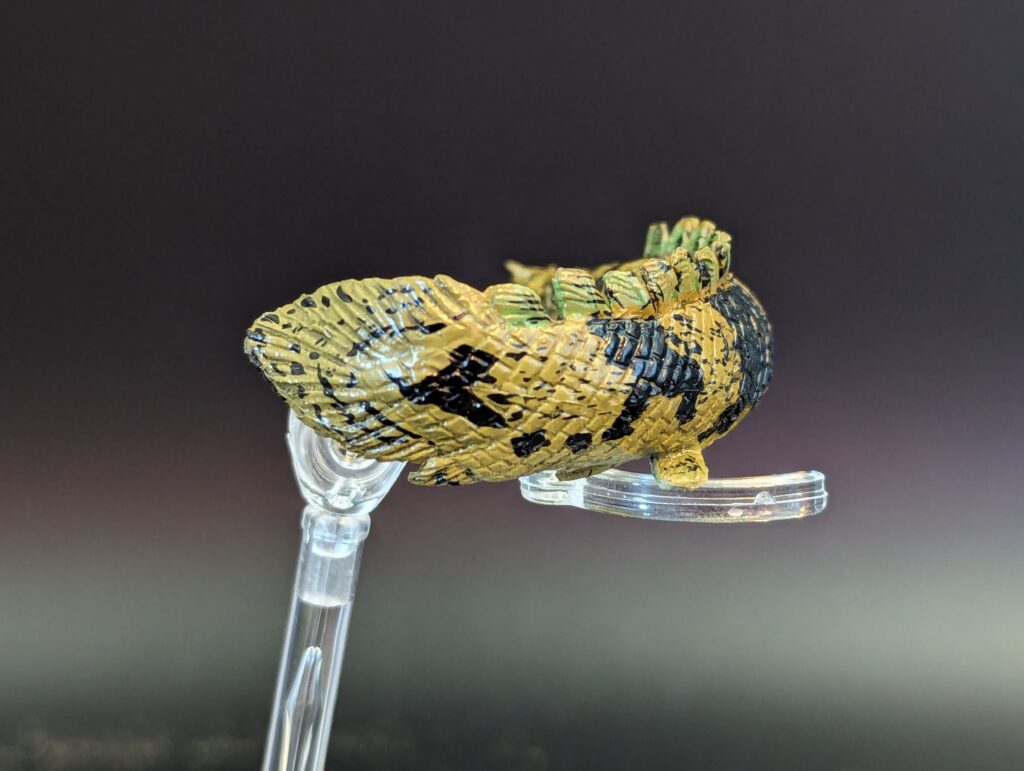
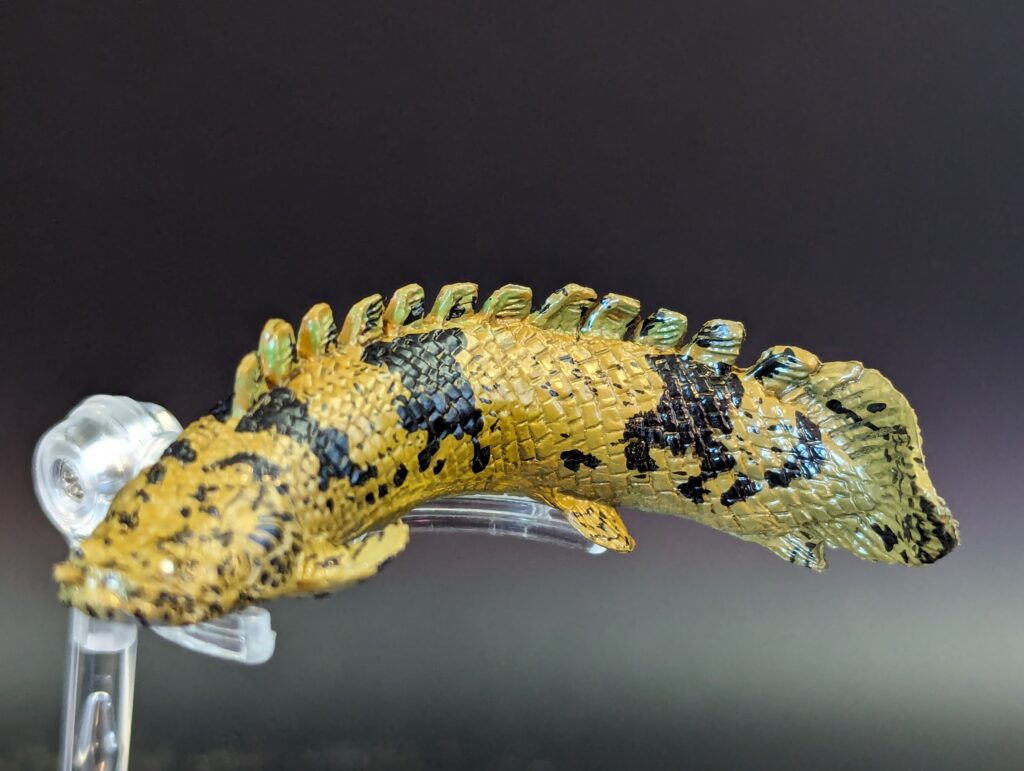
The mouth has distinct ‘lips’ and narrows laterally, and has the correct prognathic lower jaw. The nostril tubules are distinct and pronounced, a feature that can be tricky for small figures. The eyes are raised and bulbous, mostly painted the same colour as the body–except for very bright silver pupils; given that bichirs have darkness-oriented eyesight, it looks like a fish that is caught in a light at night! I can’t tell if the spiracles are visibly sculpted; these would be small openings behind the eyes that allow the fish to breathe at the surface with the top of its head.
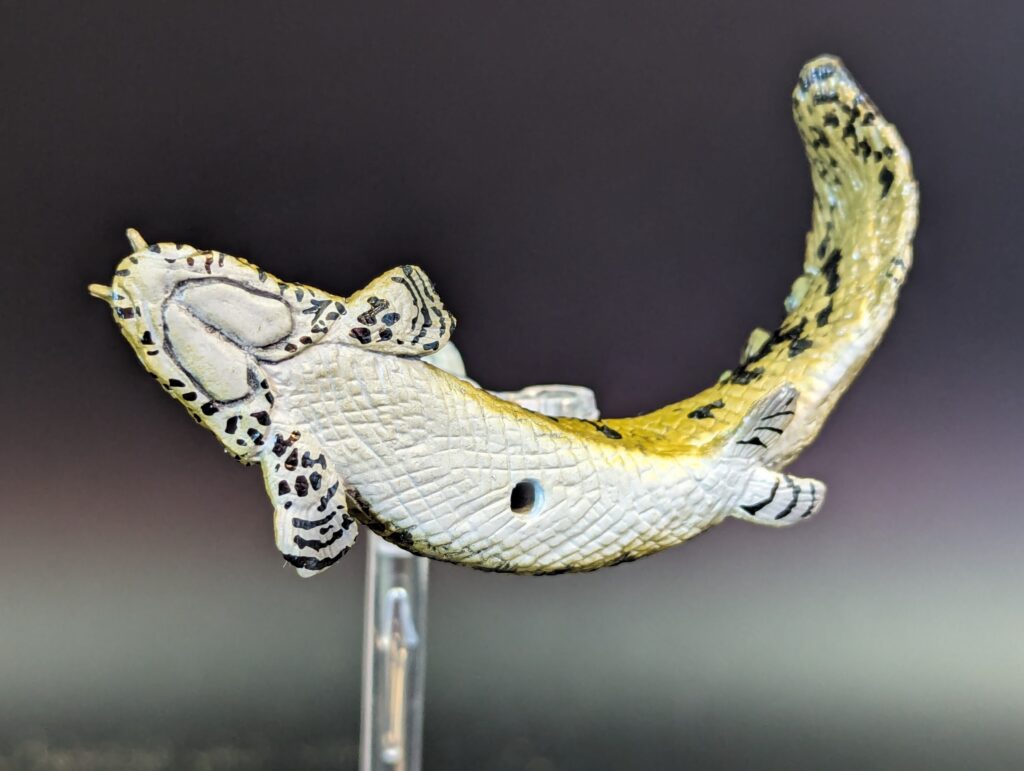

The overall colour is a dark olive-brown, with irregular black saddles on both sides, but not symmetrically. The head is covered in a number of small black spots, and a few random black blotches are along the bottom of the body. The ventral surface is a uniform very light grey, with a series of black spots along the margin of its jaw and opercula. The base of the tail has a more olive shading with less brown.


There are twelve dorsal finlets along the back, which is consistent with the usual 11-14 finlets found on the species. The first finlet is present just posteriorly to the lobe of the pectoral fins, and each has the lead spine clearly sculpted from the thin secondary rami (horizontal finlet branches, singular ramus) and thinner membranes behind them. They’re a little thick, but it’s likely an artifact of the sculpting process, it’s more important that these are clearly delineated. The spines and the rami/finlets are variously washed with the olive-brown or olive green. The paired fins are sculpted with the characteristic fleshy lobes and the distinct fan like rays. The anal fin also has the distinct lobe with a very tiny pointed fin ray. Given the size and shape, assuming the figure represents an adult, the anal fin probably indicates a female individual. The caudal fin is appropriately pointed and heterocercal, following the line of the posterior body line, with the upper lobe of the tail more horizontal more curved along the ventral lobe. The rest of the fins are painted in the same dark olive-brown with irregular black blotches and spots; on the paired fins the black spots are radiating semicircles. The bottom surface of the paired fins are white, but also with the thin black arcs.
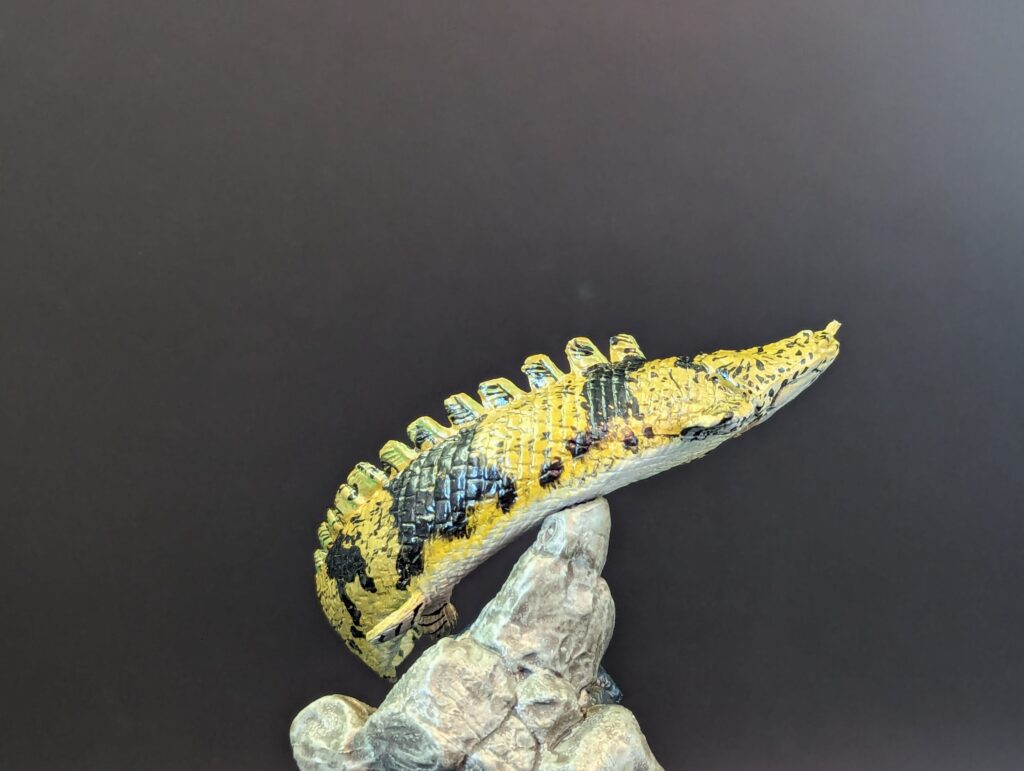
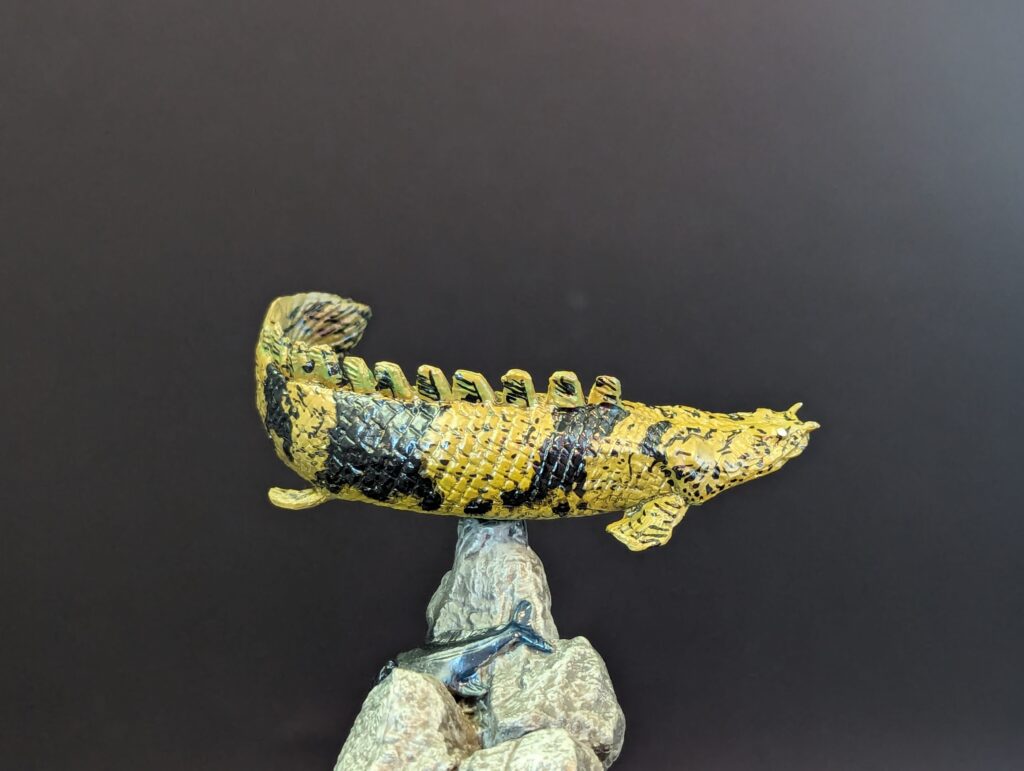
The bichir figure does have a small hole on the belly, which is meant to attach to a pointy rocky base. The small black peg that attaches the fish to the base is actually a separate piece which could be lost if you aren’t careful! The peg is the same size for every figure in the set, so you could change which fish is on which base if you really want. It also allows the fish figure to to rotate, allowing you to choose how it is positioned–and given the shape, that affects what behaviour is being represented! Pointed with the head raised highest, it looks like a bichir rising up for a breath. Positioned so that the body is roughly horizontal, it looks like a fish that is just swimming around. But if you position it face down, it looks like it’s hunting or searching for food…and guess what? That’s where the special extra species show up, which is pretty exciting–because it’s an animal that has never been made as a figure!
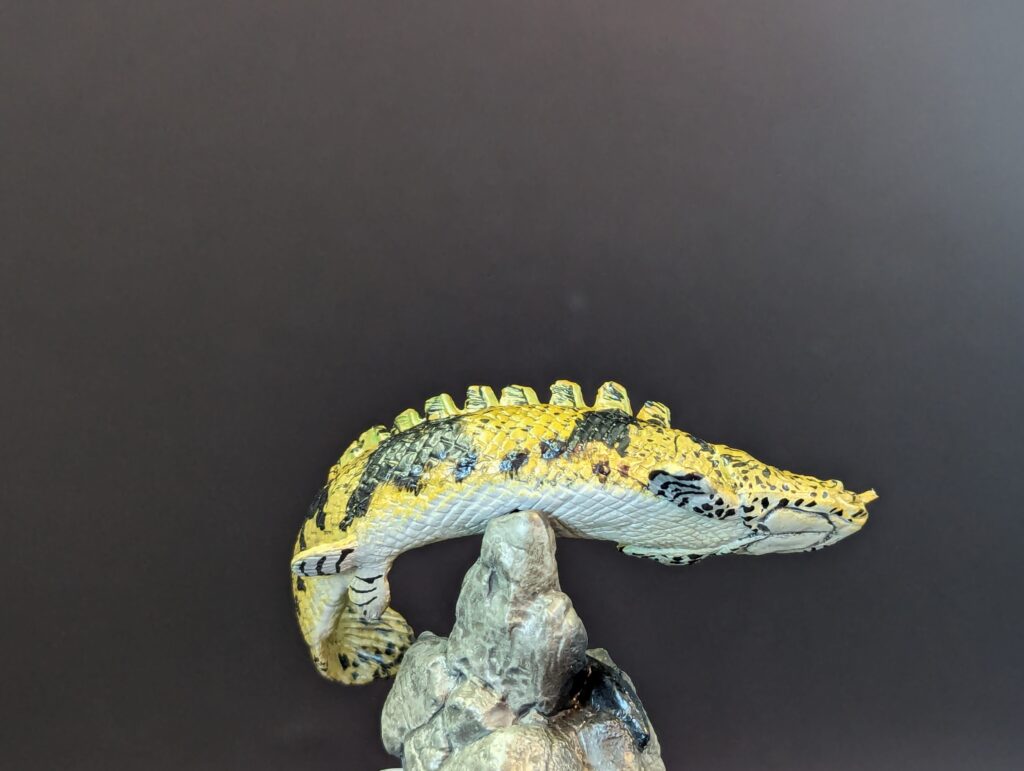

That species is a mormyrid, better known as elephant-snout fish. As far as I know, this is the first retail-available mormyrid available in any capacity (but I want to be wrong and find others). Most have rounded bodies with long dorsal fins, many (not all) with an extended flexible snout used to probe for prey. Their greatest asset is the use of a weak electric field, based on muscles in the caudal peduncle, that allows the fish to sense the world around it for social, hunting and hiding purposes (but only as a sensory field–no big shocks). Despite their odd look, mormyrids are one large family of osteoglossomorphs or bony tongues, same group as arowana and arapaima (and a relatively ancient fish group themselves).
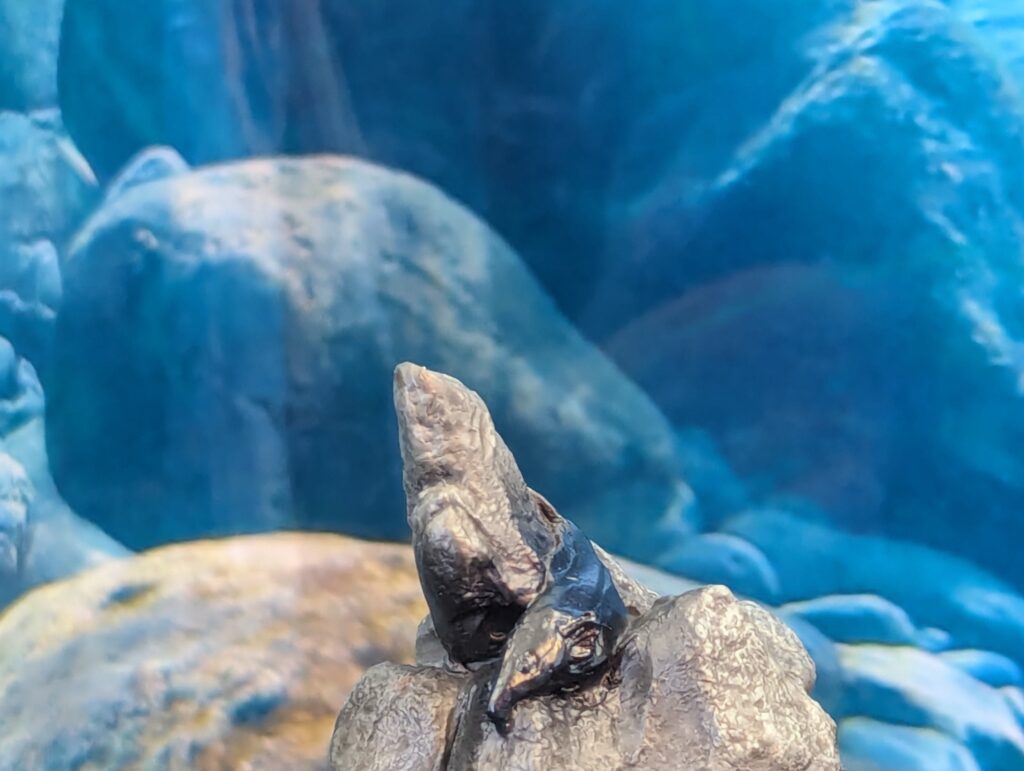

The model is part of the rock base, but don’t get me wrong–this is a full sculpt. It is up against the rock, but the head is actually sculpted sticking out past the stone work. The figure is painted entirely shiny black, and the overall body is fairly long and extended, which indicates it’s more likely from the genus Mormyrus (and rules out the most familiar species from aquaria Gnathonemus petersii). The snout is relatively short but pointed, extending with a slight curve. The dorsal fin is long, extending from the peak of the back, and extending to the caudal peduncle. The pectoral fin sticks out from the body behind the operculum, and the pelvic fins are sculpted just below (as is expected). The face and operculum are distinctly sculpted, as are the rays on the fins. The tail fin is deeply forked but not lunate, with a slightly longer lower lobe (as would be correct).


The figure is roughly 2.6cm long, but giving a scale is trickier–given that the bichir, as a full-grown adult, is about 1:6, that would make it a Mormyrus species that is about 15cm long in real life. If that’s the case, it’s very unlikely to be a full grown mormyrid. So to figure it out, I use the Discover Life Global mapper and tried to identify overlapping Mormyrus species and Polypterus endlicheri. There are a few species that have potential, but based on shape and location, it’s likely Mormyrus subundulatus, possibly M. tapirus, or M. kannume. Assuming it is M. subundulatus, the fish is only 60% full size (and there are some much bigger species), and it would place the pairing in west Africa, around countries like Cote d’Ivoire. It also means that this could definitely be a legitimate hunting scene that could very definitely end poorly for the mormyrid (in the wild or in a poorly thought out fish tank). And yes, the elephant-snout fish could use its electric field to detect the predator…but bichirs have that too (and the ability to detect the fields as well). And P. endlicheri can get that mouth open very wide. I know this from having kept them and seeing what they could eat. 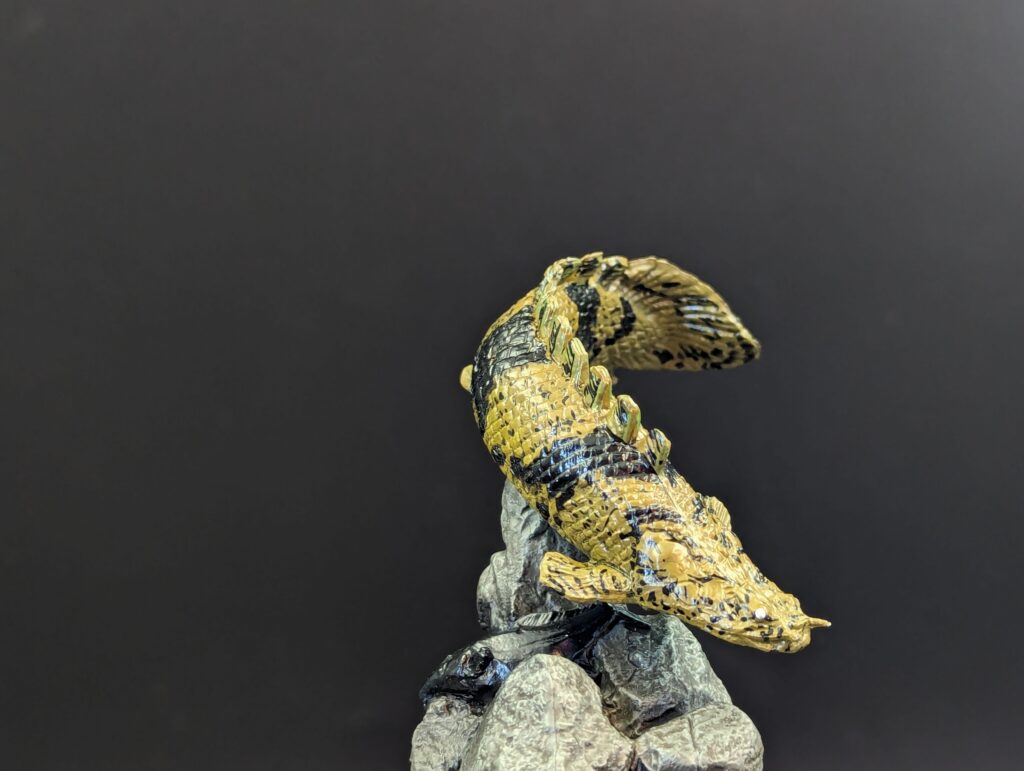
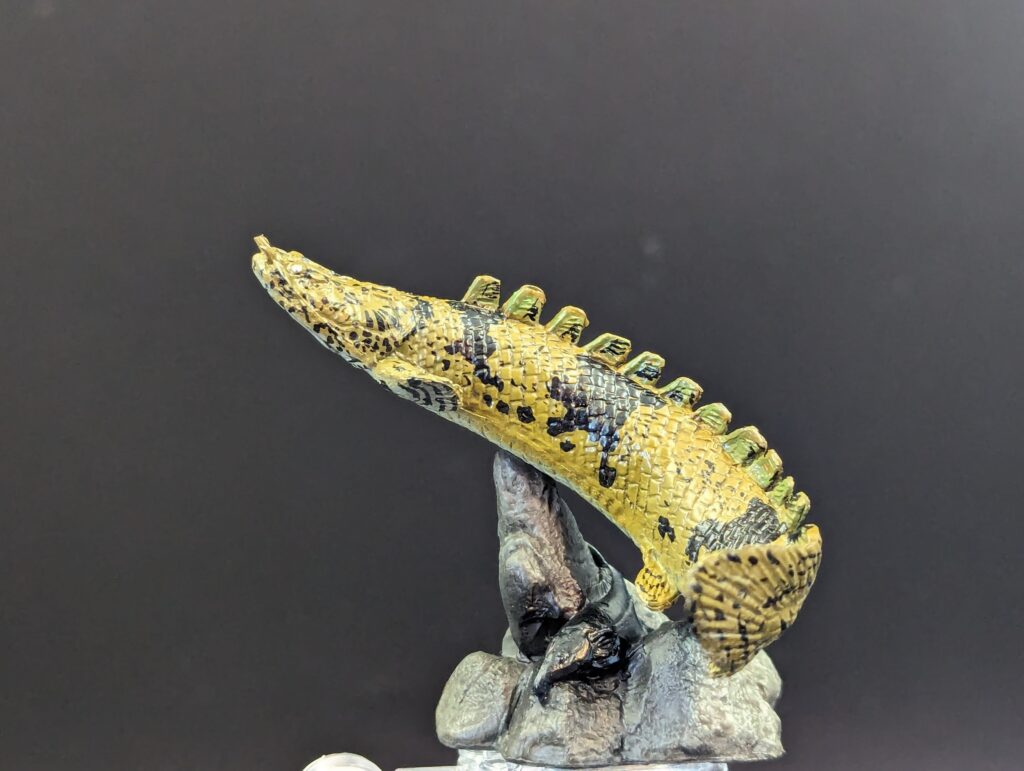
So overall, this little diorama is a wonderful little piece. For someone like me that will collect almost any polypterid thing I can find (and afford) this was awesome, and that extra little mormyrid was a surprise that in a way makes it worthwhile all on its own. If you don’t collect fish like I do, and already have a bichir of some kind–I think the elephant-snout fish might be a worthwhile reason to get it anyway–I am not aware of any others and wouldn’t expect one any time soon (except that I do have a 3D-printed one, but that’s me). The set was only recently released, which means that they are still relatively available from the right sources (mostly Japan) but I don’t recommend waiting. Sets like this tend to become hard to find fairly quickly.
Disclaimer: links to Ebay and Amazon on the AnimalToyBlog are affiliate links, so we make a small commission if you use them. Thanks for supporting us!



